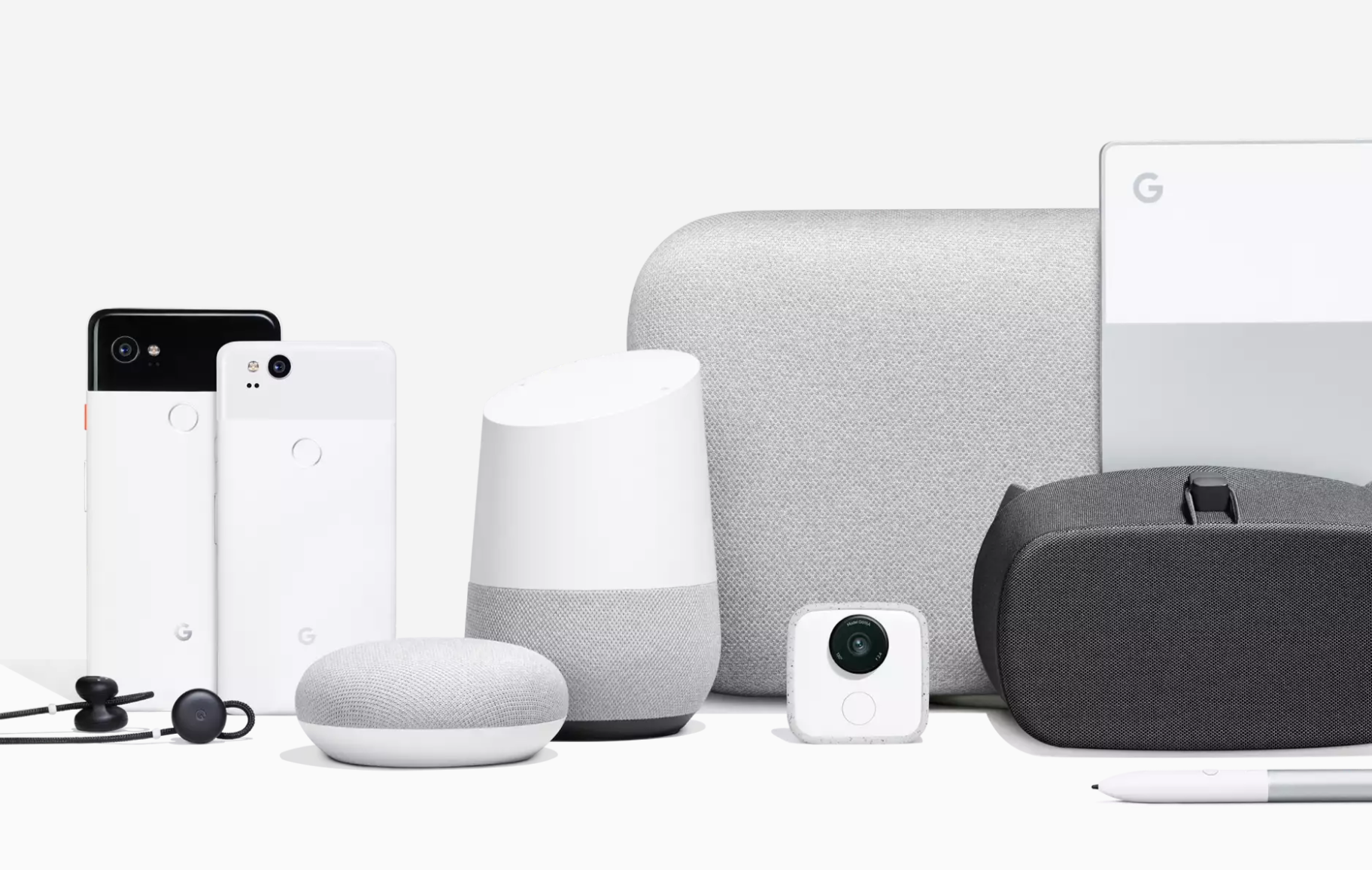Here's how going all-in on an ecosystem will cost you


The Made by Google device family
The past year has seen major changes in terms of the companies offering a complete lineup of first-party ecosystem devices.
Apple, of course, has long embraced the model of vertical integration. Beyond that, Microsoft was once embracing Lumia smartphones to create a complete device lineup and Google would not move much beyond partnerships for Nexus and one premium Chromebook. Now, of course, Microsoft has retreated from smartphones while Amazon, and particularly Google, have greatly expanded their first-party consumer device offerings.
Featured
So, what does it cost to be "livin' la vida Google" as opposed to Apple or Amazon? There are many variables, of course. For this one experimental instance of the ecosystem configuration multiverse, I chose product categories in which for which at least two out of three companies had products and considered this a "core lineup."
Admittedly, this required a bit of matchup twisting. For example, by the end of the year, both Amazon and Google proper (We'll get to Nest later.) will offer home cameras in the Echo Look and Google Clips. They are notably focused on different tasks (fashion evaluation versus serendipitous candids), but both represent use cases outside typical surveillance applications.
When all was considered, I had the following categories across Apple, Amazon and Google: smartphone, smart speaker, tablet, earbuds, laptop, home camera, and smart TV box.
Also, in order to capture the best possible first-party experience, I tended to go with the highest-priced stock product available from the companies' first-party stores. This also helped to ensure the latest generation of products and presumably the best first-party experience. It also helped with parity for more streamlined portfolios, such as Apple's, where the HomePod more directly competes with the Google Home Max versus less expensive Google Home devices.
In the end, I found that getting as much as we could from the Amazon core lineup cost $674 (for four products). From Apple, it cost $4,554 (for six products) and for Google, it cost $3,323. Google was the only company to have a product in each of the cross-platform categories I considered. That's a testament to the rapid proliferation of its Made by Google devices.
Of course, all these companies make products beyond the seven considered categories. Apple has the Apple Watch and Google has a mesh networking hotspot, the DayDream View VR headset, and the imminently expanding Next line.
A cellular-equipped Series 3 Apple Watch adds $400 for Apple, although you can go up from there with more premium materials. For Google, the Daydream View VR headset adds $100 and Google WiFi is $130. But the Nest lineup really piles on. It includes the thermostat ($250), the smoke/CO2 sensor ($120), an indoor and outdoor camera ($650) and the forthcoming Hello doorbell (not priced but Ring's top of the line model is $500). The Nest Secure home security system starter pack adds $500. In total, going all in on Nest nets another $2,020 assuming a high-end price for its video doorbell.
As for Microsoft, it participates in only three first-party categories of the core lineup but each product packs a punch when fully loaded. Even dismissing the last Lumia phones and the Surface Studio, which is designed for pros, the latest Surface Pro, Surface Laptop and Xbox One X (Microsoft's "TV box" although of course it is much more than that) add up to $5,897 when configured to the max.
To illustrate the spread, the entry-level configurations of the Surface Pro and Surface Laptop cost only $1,800 combined. Furthermore, in actuality, it's questionable how many people would want both as Microsoft's "tablet' and laptop are more similar than Apple's or Google's.
Beyond the Kindle e-reader that started Amazon's device journey and perhaps Dash buttons, the rest of the Amazon portfolio primarily includes other Echo devices that would be redundant unless one were outfitting a larger home. Even adding all these Echo models would not get you close to the cost of the Apple or Google core lineup, though. That's a function of Amazon's penchant for affordable devices and its absence of a big-ticket laptop and high-end tablet in its device portfolio.
PREVIOUS AND RELATED COVERAGE
Google launches Pixel 2, Pixel 2 XL: AI first phones for $649, $849
Google's bet is that smartphone hardware is a commodity and artificial intelligence will win the day. Can Google lead its hardware parade with Pixel 2 and Pixel 2 XL and compete with iPhone X and Samsung Note 8?
Google has Pixel-perfect timing to advance in smartphones
https://www.zdnet.com/article/google-has-pixel-perfect-timing-to-advance-in-smartphones/The high bar and rapid leapfrogging of the smartphone state of the art carries a number of barriers to entry. But the sea of sameness is providing smooth sailing for Google's device efforts.
Apple plants seeds with ARKit and HomePod
https://www.zdnet.com/article/apple-plants-seeds-with-arkit-and-homepod/One is software without a device. The other is a device without any software. Both could be big plays for developers.